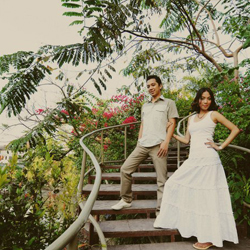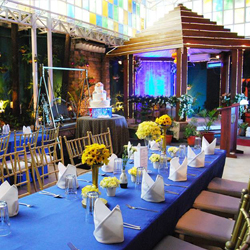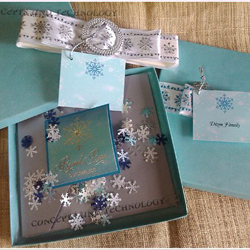Davao Oriental - The Islands' Ethnic Charmer
It is said that Davao Oriental is one of the best kept secrets of the country. The province is a place where man and nature perfectly coexists. Here, the locals have kept the peace and beauty of the lush forests of Davao Oriental. Among its main caretakers are the members of the Mandaya Tribe.
Its natural beauty is incomparable to other places. Davao Oriental has sites that will surely cater to the fantasies of a wandering tourist seeking new adventures and experiences. Its famed sites include the Mandaya village, Philippine Eagle Sanctuary, Caraga Church, and the Bonsai Forest.
Demographics
1. Population - 486,
104 (as of 2007 Census)
2. Land Area -5, 670.07 sq. km
3. Capital - Mati
4. Language/Dialect - Cebuano, Davaoeno, English, and
Filipino
5. Divisions
Cities (0)
Municipalities (11)
- Baganga
- Banaybanay
- Boston
- Caraga
- Cateel
- Gov. Generoso
- Lupon
- Manay
- Mati
- San Isidro
- xi. Tarragona
a. Pusan Point
This is where the sun “rises” first and
thus where day begins in the Philippines.
b. Mandaya Tribe
The Mandayas' unadulterated culture and traditions
are still very evident in their day-to-day lives. Weaving
of "dagmay" (Mandaya cloth) and beading of
beads are the main sources of income of the folks.
c. Aliwagwag Falls
It is considered as one the most beautiful waterfalls
in the country.
d. Philippine Eagle
Sanctuary
It is the first forest area in the Philippines set
aside for the conservation of a threatened raptor species.
e. Caraga Church
It is the oldest church in Mindanao. Baptismal records
in the church are very old and well preserved that the
records the names of proselytized Mandaya natives of
Davao are still there.
Cultural
i. Mandaya Village
Location: Brgy. Pichon, Caraga, Davao Oriental
Their unadulterated culture and traditions are still
very evident in their day-to-day lives. Weaving of "dagmay"
(Mandaya cloth) and beading of beads are the main sources
of income of the folks. The area, being in a mountain,
is cool.
ii. Mandaya Weaving
and Beading Center
Location: Provincial Tourism Complex, Mati, Davao Oriental
A one-stop-shop of novelty items and native delicacies.
It also serves as a showcase of Mandaya culture to guests
and visitors.
Historical
i. San Salvador del
Mundo Church (Caraga Church)
Location: Caraga, Davao Oriental
It houses the 1802 Church Bell brought by the friars
from Spain along with the antique image of San Isidro
Labrador and other ancient files and archives. The baptismal
registry from year 1835 up to present is still intact.
These documents proved that from 1835 up to 1846, the
places of Baganga, Manay and Mati used to register their
newly baptized inhabitants at Caraga church. Part of
the convent was used as a prison cell during the Spanish
times.
ii. Pusan Point
Location: Brgy. Santiago, Caraga, Davao Oriental
According to PAGASA, sunrise in Pusan Point comes
three minutes earlier than in its neighbor Davao City,
and eight minutes earlier than the sunrise in Manila.
iii. Saoquegue Cave
Location: Brgy. Saoquegue, Caraga, Davao Oriental
Artifacts, jars, porcelain and potteries were found
in the cave. These items are now in display in the area.
Man-made
i. Menzi Tourism
Complex
Location: Mati, Davao Oriental
The area is overlooking the vast rolling terrain planted
with the famous Menzi mango and pomelo fruits planted
by the Menzi Farmers Cooperative. The site has been
developed to serve as the major tourist accommodation
and convention facilities of the province.
ii. Provincial Capitol
Park
Location: Mati, Davao Oriental
The park houses the Provincial Capitol Building, some
local and national government offices. The area is situated
on a hilltop overlooking the town and the Pujada Bay.
It has a park and a skating rink. A favorite strolling
grounds for local residents.
Natural
i. Aliwagwag Falls
Location: Brgy. Aliwagwag, Cateel, Davao Oriental
Its towering waterfalls are considered by hydraulic
engineers as the highest in the country. It has a series
of 84 cascading falls appearing like stairway to the
sky in various heights and among the steps hanging from
6 ft. to 100 ft. and 20 meters in width.
ii. Philippine Eagle
Sanctuary
Location: Brgy. Cabuaya and Luban Mati, Davao Oriental
The sanctuary covers 7,000 hectares of tropical forests
This sanctuary is a joint initiative of the City Government
of Mati, the Barangay Local Government (BLG) of Cabuaya,
the Philippine Eagle Foundation, and the regional offices
of the DENR, PNP, NCIP, DOT and DILG. The sanctuary
has eagles Cabu, Aya and Cabuaya. Very recently, Cabu
& Aya gave birth to another sibling.
iii. Mt. Hamiguitan
Bonsai Forest
Location: Brgy. La Union, San Isidro, Davao Oriental
At 1,650 feet above sea level, one can found more
than a thousand hectares of 2-3 ft. tall century-old
trees that are very sturdy that one can literally stand
over it without falling. The area is a favorite camping
site of many local and foreign tourists, mountaineering
enthusiasts, biologists, orniterologists and plain adventure-seeking
people.
iv. Tinagong Dagat
Location: Boundary of San Isidro and Gov. Generoso,
Davao Oriental
The area is uninhabited and is considered as one of
the most puzzling phenomena of nature. The water, reportedly,
has its high tide and low tide schedule.
v. Sigaboy Island
Location: Gov. Generoso, Davao Oriental
It is a 30-hectare islet of lush tropical foliage
with white sand beach, strong currents and deep waters,
ideal for fishing, coral and shell hunting.
vi. Sigaboy Island
Location: Gov. Generoso, Davao Oriental
It is a 30-hectare islet of lush tropical foliage
with white sand beach, strong currents and deep waters,
ideal for fishing, coral and shell hunting.
vii. Sigaboy Island
Location: Gov. Generoso, Davao Oriental
It is a 30-hectare islet of lush tropical foliage
with white sand beach, strong currents and deep waters,
ideal for fishing, coral and shell hunting.
viii. Waniban Island
Location: Mati, Davao Oriental
It is a 4-hectare islet with white sand beach along
the shoreline. Rest house made of nipa benches and kiosks
are to be constructed.
ix. Burias Islet
Location: Banaybanay, Davao Oriental
It is a 1-hectare islet of pure white sand available
during low and minimal tide. Ideal place for swimming
and sunbathing away from the noise and haste of modern
lives. Seashells abound on this place.
x. Dahican Beach
Location: Mati, Davao Oriental
It became popular for its exceptionally long stretch
of powdery white-sand shoreline and gently blowing breeze
from the Pacific Ocean. Ideal for wind surfing and skim
boarding because its waves are comparable to those in
Hawaii
xi. Calapagan Hot
Spring
Location: Lupon, Davao Oriental
Hot mineral water surrounds the woodlands and a river
exists near the hot spring. It is ideal site for swimming
and hunting for small games.
Religious
i. Cape of San Agustin
Location: Boundary of Mati and Gov. Generoso, Davao
Oriental
This is where St. Francis Xavier supposed to have
said his first mass. A lighthouse stands at the site.
ii. Altar Cave of
San Agustin
Location: Boundary of Mati and Gov. Generoso, Davao
Oriental
The altar, naturally made up of stones, is approximate
60 feet high above the shoreline. Its mid-section has
an estimated floor area of 18 sq. m. Facing the Pacific
Ocean, an eight hundred meter length of fine white sand
along the beach spread at the right and left side of
the altar, respectively.
a. Bauldayawan Festival
Place: San Isidro, Davao Oriental
Date: Third week of June
The festival serves as a thanksgiving for the year’s
good harvest. Baul is from the Mandaya word for farm,
da is from dagat or sea, and yawan means to keep. Street
dancing, float parade, agri-trade fiar and cultural
presentations highlight the yearly event.
b. Banayan Festival
Place: Banaybanay, Davao Oriental
Date: Third week of October
It is a thanksgiving celebration for the town’s
bountiful harvests, rice in particular. Activities include
agri-industrial fair/exhibit, cultural/tribal shows
and presentations, ethnic/tribal street dancing competition,
and sports fest.
c. Sambukokan Festival
Place: Matil, Davao Oriental
Date: Last week of October
Sambuokan is derived from the word ”buok”,
a Mandaya term that literally means “one”.
The festival is the showcase of Mati’s diverse
culture and tradition, sports and adventure. It is also
an expression of thanksgiving. This is a weeklong celebration
observed during the commemoration of the founding anniversary
of the Municipality of Mati every 29th of October .
This festival is highlighted with neo-ethnic Indak-Indak
– Street dancing Competition, and fun-filled nightly
activities.
By Air-Land:
Take a flight bound for Davao City. Travel time
from Manila is one hour and 40 minutes. From the
airport, the capital is a good three-hour drive.
Public transportation are available near the area.
By Sea-land:
Take a ferry bound for Sasa Wharf in Davao City.
The capital is a good three-hour drive. Public
transportation are available near the area.






